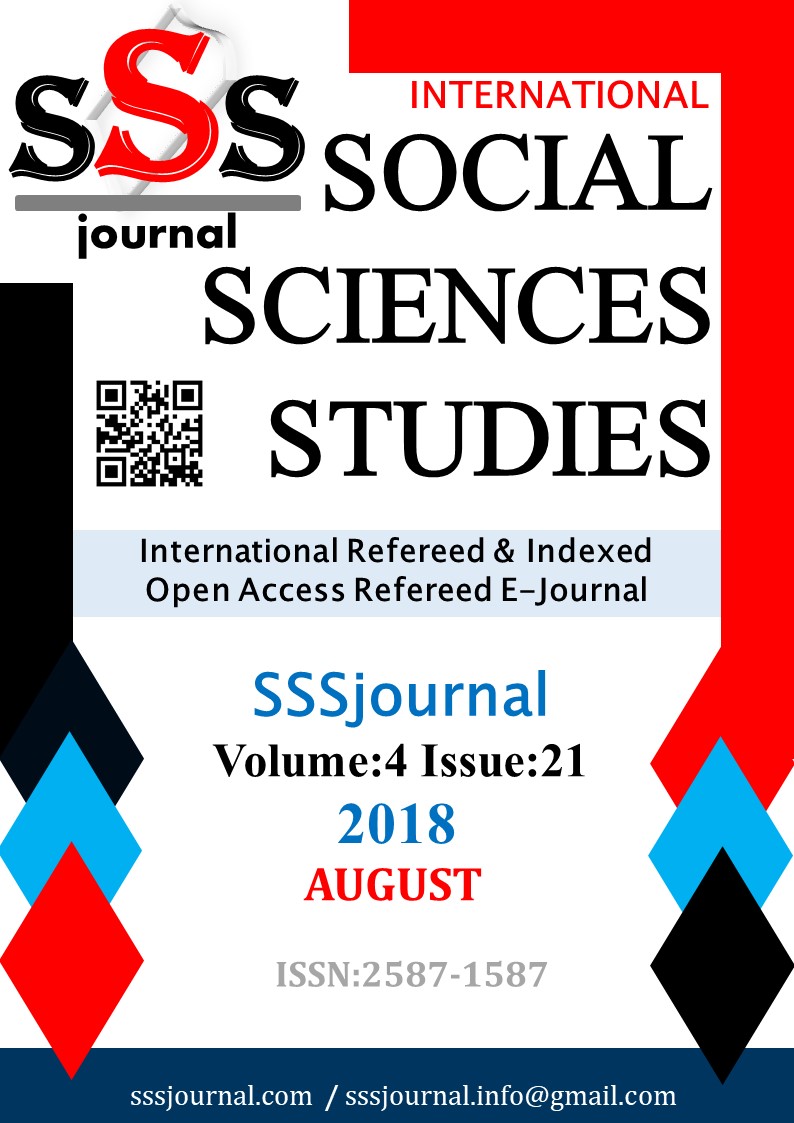Author :
Abstract
Mushafın 114 sûreden meydana gelen ilâhi metni, Fâtiha sûresi ile başlayıp Nâs sûresi ile sona ermektedir. Mushafın yarısı ise Kehf sûresinin sonu Meryem Sûresinin başına denk gelmektedir. Okuma ve ezberleme konusunda kolaylık ve takibi sağlamak için mushaf metni bölümlenmiştir. En küçük bölümlenme âyetler, ikinci bölümlenme ise âyetlerin oluşturduğu sûrelerdir. En yaygın bölünme, her birine cüz adı verilen mushafın otuza bölünmesi şeklinde olmuştur. Bezemek suretiyle yazıya dolayısıyla kitaba estetik değer kazandıran Tezhip sanatı ise, mushaftaki bu bölümlenmeleri tezyînî unsurlarla işaret etmek, dikkati çekmek gibi görevler yüklenmiştir. Mushaf metninin başlamasıyla birlikte, âyetlerin sonlarındaki duraklar, her bir sûrenin başlangıcında yer alan sûrebaşları, yazı boşluklarındaki koltuklar, sayfa kenarlarına (hâşiye) cüzlerin, sûrelerin ve âyetlerin bölünme yerlerini işaret eden mushaf gülleri, dış pervaz/hâşiye bezemeleri , bazı mushaflarda otuz cüzden her birinin başlangıcını ve cüzün yarısını gösteren bezemeli sayfa/sayfalar, kitabın başında zahriye, metnin başlangıcında serlevha, metnin sonunda ferağ kaydı/ketebe sayfası/hâtime/hâtime zahriyesi mushafın metni bittikten sonra ilâve edilen hatim duası ve falnâme sayfaları tezhip edilmişlerdir. Mushafların bezenmesinde ender bir uygulama olarak görülen, tek veya karşılıklı çift sayfa şeklinde düzenlenmiş, Nısfü’l-Kur’ân (Kur’ân’ın yarısı) olarak isimlendirilen tezhipli ara sayfalar dikkati çeker. Makalede, XIV, XVI ve XVIII. yüzyıllara tarihlendirilen 38 adet el yazması mushafda tespit edilen bu tezhipli sayfalar incelenmiş, Nısfü’l-Kur’ân tezhibindeki sayfa düzeni gruplandırılarak seçilen mushaflarla örneklendirilmiştir.
Keywords
Abstract
The divine text of the Qur’an manuscript’s 114 surahs begins with Surah al-Fatiha and ends with Surah an-Nas. The first half of the Qur’an manuscript ends with Surah al-Kahf and the second half begins with Surah Maryam. The Qur’an text has been divided to facilitate following, reading and memorizing the text. The smallest divisions are ayats (verses), and the next are surahs (chapters), which consist of the verses. The most common way to divide a Qur’an manuscript is to divide it into thirty fascicles each of which is called juz’. While the art of illumination adds aesthetic value to the book, the decorative elements also function as indicators of the manuscript divisions and provide emphasis. Starting from the beginning of the Qur’an text, the illuminations comprise the stop-signs at the end of the verses, the surah headings at the beginning of every surah, the panels in the text’s empty spaces, the verse markers and margins indicating the divisions of the surahs and verses, and in some manuscripts there are decorations at the beginning of each of the thirty juz’ as well as a decorated page or pages indicating middle of the juz’, the front endpaper at the beginning of the book, the frontispiece at the beginning of the text, the back endpapers, and after the text the added prayer pages and falnama sections. In Qur’an manuscript illumination there are also rare examples of the so-called nisf al-Qur’an where the mid-point of the Qur’an has a single or facing illuminated pages. This paper examines 38 the Qur’an manuscripts from the 14th, 16th, and 18th century with this type of illuminated pages, classifies the page lay-out of the nisf al-Qur’an, and illustrates them with selected manuscripts.
Keywords
- DEMİRCAN AKSOY, Z. (2010). “XIV.Yüzyıl Anadolu Türk Tezhib Sanatı", Yayınlanmamış Doktora tezi,
- DEMİRCAN AKSOY, Z. (2010). “XIV.Yüzyıl Anadolu Türk Tezhib Sanatı", Yayınlanmamış Doktora tezi, Mimar Sinan Güzel Sanatlar Üniversitesi Sosyal Bilimler Enstitüsü Sanat Tarihi ABD., İstanbul.
- DERMAN, F.Ç. (2012). “Tarihimizde Mushafların Bezenmesi”, Diyanet İlmi Dergi: Kur-ân Özel Sayısı: Kur-ân’ın Nüzûlünün 1400. Yılı Anısına, Diyanet İşleri Başkanlığı yayınları, ss.647-653.
- DERMAN, F.Ç. (2009). “Tezhip Sanatında Kullanılan Terimler, Tabirler ve Malzeme” (Ed.A.Rıza Özcan), Hat ve Tezhip Sanatı, ss.525-535, Kültür ve Turizm Bakanlığı, Ankara.
- DERMAN, M.U. (2010). Doksandokuz İstanbul Mushafı, Kültür Başkenti Ajansı, İstanbul.
- DURAN, G. (2016). “Nısfü’l-Kur’ân Tezhibine Dair”, III.Uluslararası Türk Sanatları, Tarihi ve FolkloruKongresi / Sanat Etkinlikleri, 23-27 Nisan 2015, (Ed. Osman Kunduracı, Ahmet Aytaç), Selçuk Ünv.Türk El Sanatları Araştırma ve Uygulama Merkezi, 221-227, Rostov-na-Don/Rusya.
- DURAN, G. (2015). “Mushafların Bezenmesinde Tezhib Sanatının Önemi ve Katkıları” Uluslararası Kültür,Sanat, Folklor Kongresi / Sanat Etkinlikleri, 20-26 Eylül 2014 (Ed. Osman Kunduracı, Ahmet Aytaç), Selçuk Ünv.Türk El Sanatları Araştırma ve Uygulama Merkezi, 133-138, Delhi/Hindistan.
- DURAN, G. (2012). “Tezhib”, Türkiye Diyanet Vakfı İslâm Ansiklopedisi (DİA), (41): 63-65.
- KOÇYİĞİT, H. (2013). “Kur’ân’ın Bölümlenmesi”, Atatürk Üniversitesi İlahiyat Fakültesi Dergisi, (39):363-393.
- MAŞALI, M.E. (1997). “Mushaf”, Türkiye Diyanet Vakfı İslâm Ansiklopedisi (DİA), (31): 242-248.
- TANINDI, Z. (2010).“Kur-ân-ı Kerim Nüshalarının Ciltleri ve Tezhibleri” (Ed.Müjde Unustası), 1400. Yılında Kur-ân-ı Kerim, ss. 90-121, Kültür ve Turizm Bakanlığı, İstanbul: Antik A.Ş yayınları, Ankara.
- TANINDI, Z. (2009). “Başlangıcından Osmanlı’ya Tezhib Sanatı” (Ed.A.Rıza Özcan), Hat ve Tezhip Sanatı, ss.243-281, Kültür ve Turizm Bakanlığı, Ankara.
- TANINDI, Z. (2008). “Anadolu Kökenli Kur-ân-ı Kerim Nüshalarında Müzehhep Meryem Sûresi”, İslamHristiyan Sanatında Melekler, Peygamberler ve Azizler, Sanat Tarihi Atölye Çalışması, 4 (özet), Hacettepe Üniversitesi Sanat Tarihi Bölümü yayınları, Ankara.
- 1400. Yılında Kur-ân-ı Kerim, (Ed.Müjde Unustası), 2010, Antik A.Ş. yayınları, İstanbul.





